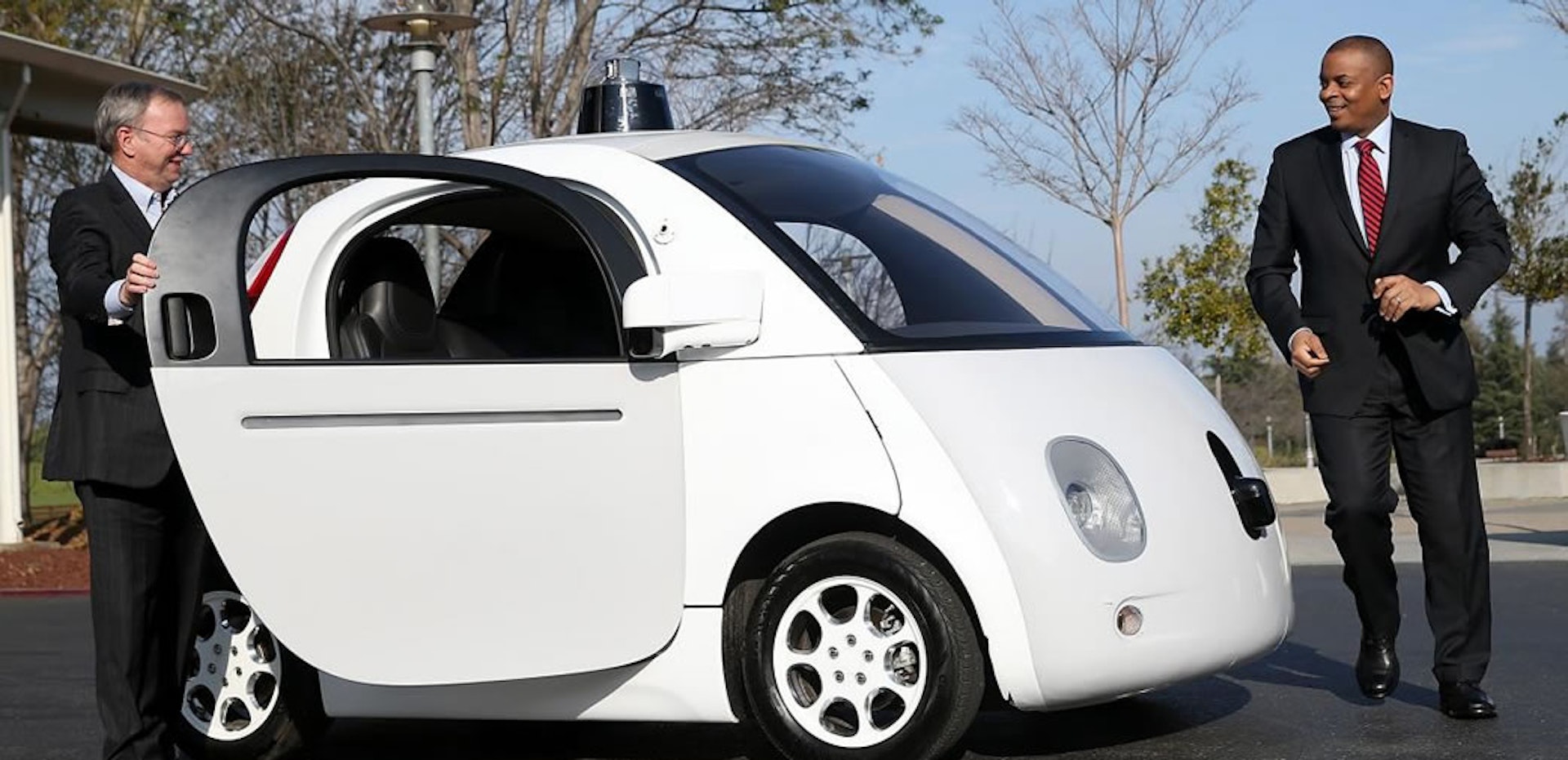Internal emails and government records show Google used its influence in the Obama administration to push its vision for self-driving cars, enlisting White House officials and federal regulators to lobby state officials about rules that might have hindered its business plans.
The company found a willing partner in the White House and federal road safety regulators, who lobbied state officials about Google’s preferred policies and issued legal advice supporting its positions. At one point, the White House technology advisor charged with developing policy on self-driving cars, R. David Edelman, simply asked Google to provide its policy priorities for “us government types”.
Over the past five years, Google has worked closely with senior officials from the White House and National Highway Traffic Safety Administration (NHTSA), meeting dozens of times and exchanging hundreds of emails to shape policy on self-driving cars. In particular, Google worked hand-in-hand with the administration to influence autonomous vehicle legislation in states such as California, Hawaii, and Florida.
On several occasions, Google gave administration officials the names of individual state officials to meet.
The string of contacts set the stage for a series of major policy wins for Google as it vied with global automakers to be the first to put driverless cars on the roads. In October 2015, the White House announced it was doubling its spending on autonomous vehicles. Federal safety regulators ruled in February 2016 that cars had no need for a human driver, in what was seen as a legal breakthrough for Google’s self-driving car.
And in January 2016, the White House announced plans to spend nearly $4 billion over the next decade to speed acceptance of self-driving cars on U.S. roads.
However, some critics have charged that the Obama administration is moving too quickly to get autonomous vehicles on the road before enforceable safety standards are in place. In a recent letter, a coalition of auto safety advocates, including a former NHTSA administrator, wrote the administration was moving with “undue haste” to change the rules before the technology was ready, pointing to the crash of a Tesla car on autopilot.
Self-driving cars represent a key bet by Google parent company Alphabet Inc. to expand beyond its core search advertising business, which still accounts for virtually all of its revenue. The sector could be worth billions of dollars annually for the company that establishes a lead. Given their different approaches, the kind of regulation adopted by the government could help decide who that is.
At stake are two competing visions for driverless vehicles. Google is pushing fully-autonomous vehicles that accept no instruction from human passengers, known in government parlance as “Level Four” or L4 autonomy. Its bubble-shaped prototypes have no steering wheel, gas pedal or brake.
Other automakers and their suppliers, such as Toyota, Delphi and Mobileye, are pursuing a different strategy that would allow drivers to take control if something goes wrong, known as Level Three or L3 autonomy.
California passed a law in 2012 that followed the more gradual approach, mandating that self-driving cars must retain a steering wheel, gas pedal and a brake — as well as a licensed driver to take control if something went wrong. Google fought that approach in California and elsewhere, arguing that any human intervention would make driving less safe.
At virtually every key milestone in the Obama Administration’s push to craft new rules for driverless cars, Google was at the administration’s side — often literally — and received favorable outcomes that benefited the company
Because of its size, California has traditionally been the de facto standard-setter in the U.S. and, oftentimes, the world. The documents show Google pressed its contacts in the White House and NHTSA to talk with states that were considering adopting California's approach.
As Google was flexing its political and lobbying muscle in state capitols in 2012, it was talking to Obama administration officials about the California legislation. Days after California’s legislation passed, Transportation Secretary Ray LaHood traveled to the state to meet with DMV officials and Google, even receiving a briefing by Google[X]’s Megan Smith on the “situation in California” according to emails.
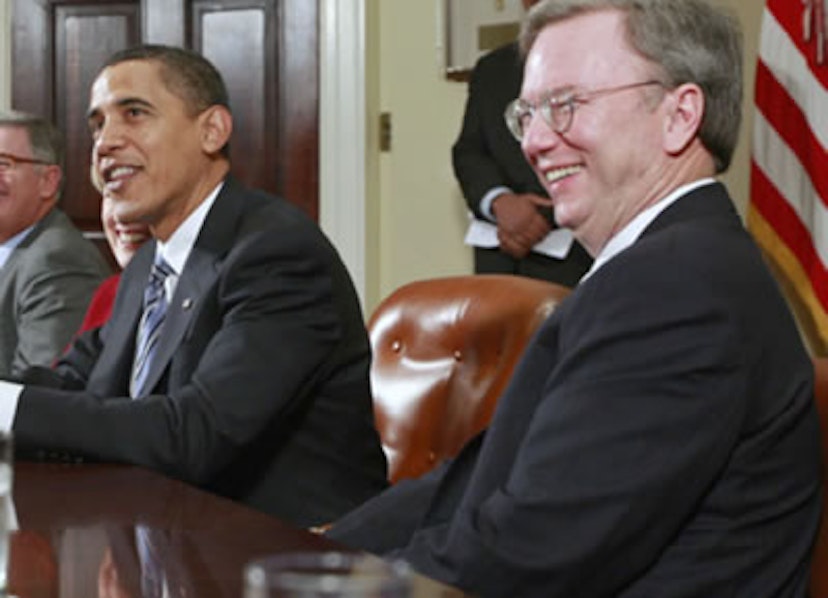
Google Chairman Eric Schmidt and President Obama
at White House tech policy meeting
Smith, who ran the division developing Google’s self-driving cars, left Google in 2014 to become the White House chief technology officer. In that role, she now oversees technology policies and initiatives throughout the federal government.
The revolving door spun in both directions. At least five senior NHTSA and Department of Transportation officials involved in the crafting of autonomous vehicle rules ultimately left the agency to work for Google, lobbying firms representing the company, or transportation trade associations in which Google is a financial supporter. [See Sidebar: Google's Revolving Door Raises New Ethical Concerns]
Google’s early courting of NHTSA
On October 27, 2011, NHTSA officials hosted Google’s self-driving car team in Washington for two days of “confidential and proprietary” meetings. The meetings offered Google the first opportunity to show its technology to senior safety regulators and were the first of at least two-dozen meetings between NHTSA and Google from 2011 to 2016.
That first, two-day meeting included breakout sessions on engineering, security, and policy discussions concerning the regulatory treatment of self-driving vehicles. It also included a self-driving car demonstration in which NHTSA officials rode in Google’s driverless cars along George Washington Parkway.
The timing of the meeting was significant: The murky legal picture and proper regulatory treatment of self-driving cars was receiving increased attention from state lawmakers in 2011 as Google and other companies began conducting real-world tests of the new technology.
At the time, self-driving cars were deemed illegal in all 50 states and Google had begun to aggressively lobby state legislatures to relax restrictions in order to test them on state roads.
Google and NHTSA coordinate to influence state legislation
Three months after that meeting, emails show that Google and the NHTSA began coordinating efforts to influence state legislation on self-driving cars. On January 20, 2012, Anthony Levandowski of Google’s autonomous car division emailed NHTSA’s deputy director, Ron Medford, with an update on Google’s lobbying efforts concerning self-driving car legislation in Hawaii and Florida.
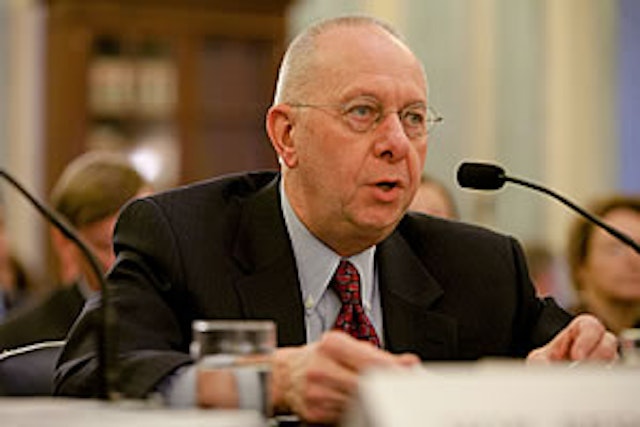
NHTSA Deputy Director Ron Medford left the agency in 2012
to join Google’s self-driving car division
Six days later, on January 26, 2012, Google lobbyist Charlie Hale emailed NHTSA’s chief counsel Kevin Vincent offering to provide contacts at Florida DMV with which to “interface” on the recently introduced autonomous vehicle legislation in the state. On January 30, 2012, Levandowski again emailed Vincent:
“Let me know when you want to chat, we have some names for you to talk with FL people”.
Four days later on February 3, 2012, Levandowski again emailed Vincent about driverless car legislation in Oklahoma and Arizona, asking if Vincent had received the contact information for Florida. Vincent replied that he had traded phone calls with Google’s outside counsel, Phil Recht, a former NHTSA official in the Clinton Administration, who was representing Google on its state lobbying efforts concerning self-driving cars.
On March 29, 2012, Google and NHTSA officials met again at NHTSA headquarters to discuss state legislation on self-driving cars. Google’s state policy team from Mountain View participated via conference call.
The string of meetings and emails took place at a pivotal moment, in which states like California, Florida and Hawaii were considering new laws regulating testing of autonomous cars. Google executives and NHTSA officials would meet again numerous times throughout 2012 to discuss driverless cars, including a Google/NHTSA research meeting in March, a Mountain View meeting in April, a June Google visit to NHTSA’s Vehicle Research Test Center in Ohio, and two October meetings between Google executives and then NHTSA deputy administrator, Ron Medford.
At NHTSA, Medford proved highly responsive to Google’s needs, referring at one point to “our relationship” and stating that he was better informed of Google’s policy positions than was Google’s own lawyer. Medford also suggested “more regular communication as issues progress with CA” and told Google’s Urmson to “call and talk about issues directly to me whenever you want.”
Medford went to work at Google shortly after.
White House Gets Involved
NHTSA officials and Google executives continued meeting on driverless car policy issues throughout 2012, while the White House turned its attention to autonomous vehicles in early 2013.
On January 28, 2013, White House internet advisor David Edelman reached out to Google lobbyist Johanna Shelton for a briefing on self-driving cars according to emails.
Edelman, who noted that he would be in charge of “writing policy” on self-driving cars, was introduced to Google lobbyist Charlie Hale who arranged for him to visit with Google’s self-driving car team in Mountain View four days later, on February 1, 2013.
On April 14, 2013, Edelman emailed Google’s Urmson that he was pulling together his internal team to move to the “next phase of consideration on self-driving cars” and suggested a conference call to get Google’s “top priorities for the likes of us government-types.”
Less than a month later, on May 10, 2013, Google executives participated in a Google Hangout with White House deputy director for technology Tom Kalil to discuss Google self-driving cars and other policy priorities according to the emails.
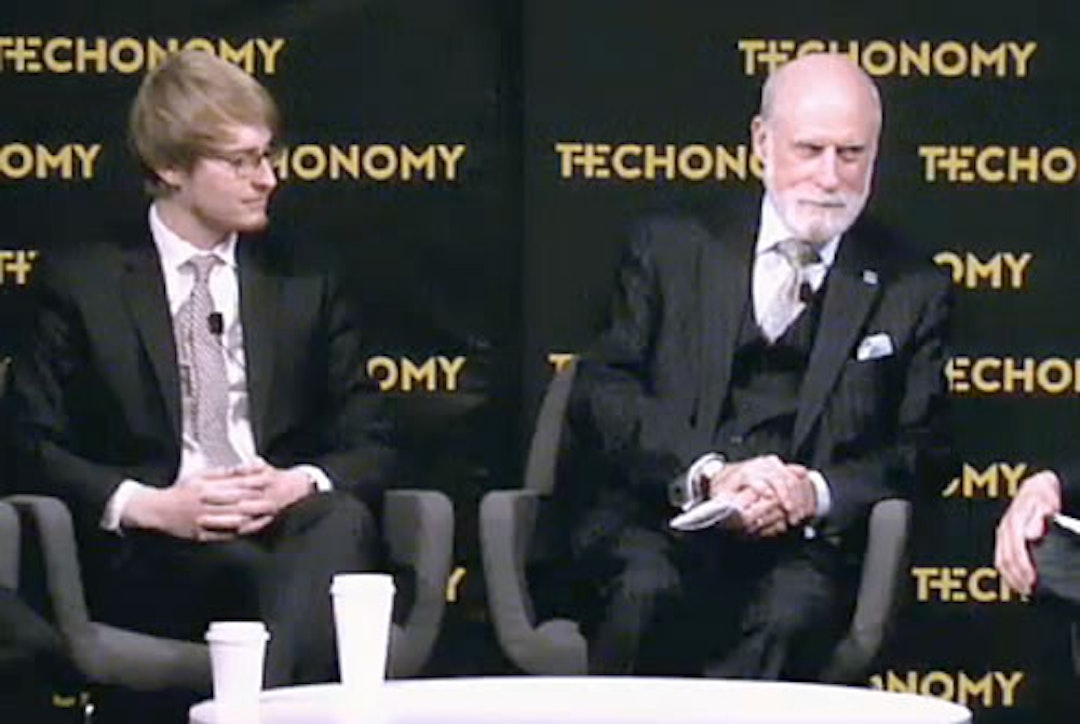
David Edelman and Vint Cerf at Techonomy
Conference, June 2015
Three weeks after the Google Hangout, the Department of Transportation released its official policy on driverless cars on May 30, 2013. In an important win for Google, the policy provided guidance to states considering autonomous vehicle legislation “to ensure that their legislation does not inadvertently impact current vehicle technology.”
On July 17, 2013, Edelman spoke at an autonomous vehicle conference at Stanford Law School. “There is no room in the White House big enough to house all the people interested in this issue,” said Edelman. He added that regulation “has the potential to stall this entire field.”
Three weeks later, on August 5, 2013, several NHTSA officials including Danny Smith and Chan Lieu met with Edelman in the White House, according to visitor logs.
At virtually every key milestone in the Obama Administration’s push to craft new rules for driverless cars, Google was at the administration’s side — often literally — and received favorable outcomes that benefited the company.
On February 2, 2015, Google Chairman Eric Schmidt and US Transportation Secretary Anthony Foxx jointly unveiled a strategic plan for the future of transportation that advocated autonomous vehicle and other new transportation technologies. Foxx unveiled the plan during a “fireside chat” with Schmidt at the Googleplex, after riding there in one of Google’s self-driving cars.
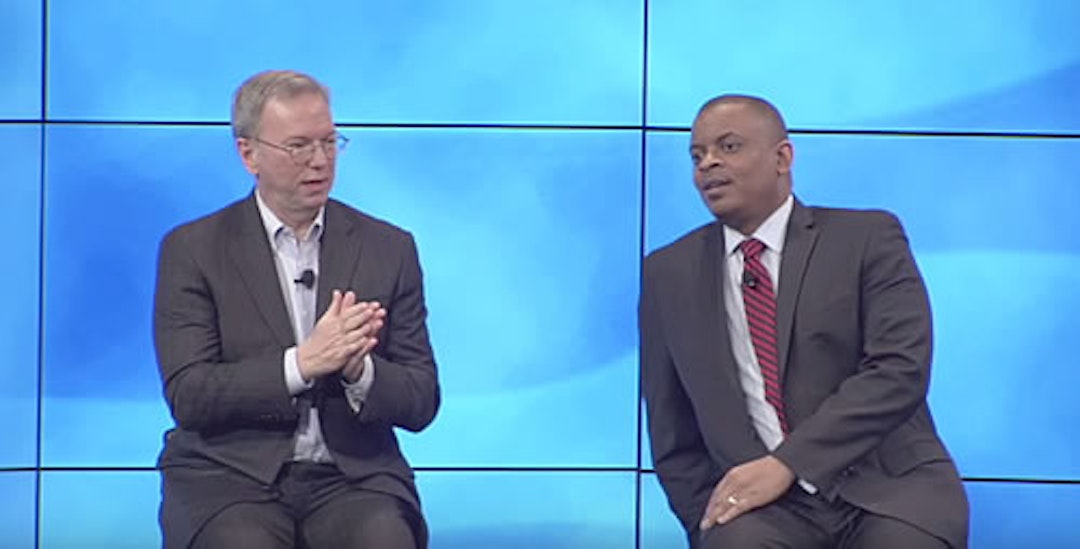
Google Chairman Eric Schmidt and Transportation Secretary Anthony
Foxx participate in “fireside chat” at Google's Mountain View headquarters
Foxx echoed Google’s views when he held that regulatory frameworks at the federal, state and local levels needed to be as “flexible and adaptive” as possible to accommodate rules for driverless cars. “As technology is being incubated, we need to find ways to be at the table with the idea creators so that we can help you shape those technologies in ways that gain faster approval in the marketplace,” Foxx said.
A year later, on February 10, 2016, NHTSA regulators issued a seminal legal interpretation that largely agreed with Google’s view that artificial intelligence systems piloting self-driving cars could be considered a “driver” under federal law.
Two weeks after that ruling, the President’s Council of Advisors on Science and Technology (PCAST) “Cities Working Group” released a report on technology and cities that touted the benefits of fully-autonomous vehicles of the kind Google prefers.
“Transportation in cities is on the verge of large-scale transformation, in part through the efforts by vehicle manufacturers, their principal suppliers, technology entities like Google, the Defense Advanced Research Projects Agency (DARPA), the Department of Transportation (DOT), and universities to develop connected and fully autonomous (i.e., self-driving) vehicles (CAVs), which are increasingly public and visible,” the report stated.
Alphabet’s chairman, Eric Schmidt, led the working group that authored the report and several Google executives and members of its self-driving car team provided input. Those included Google’s Urmson, Thrun, Adrian Aoun, and Dan Doctoroff with Sidewalk Labs, an Alphabet division focused on future cities.
Timeline of Events
Click on the arrows for details and links to source documents
